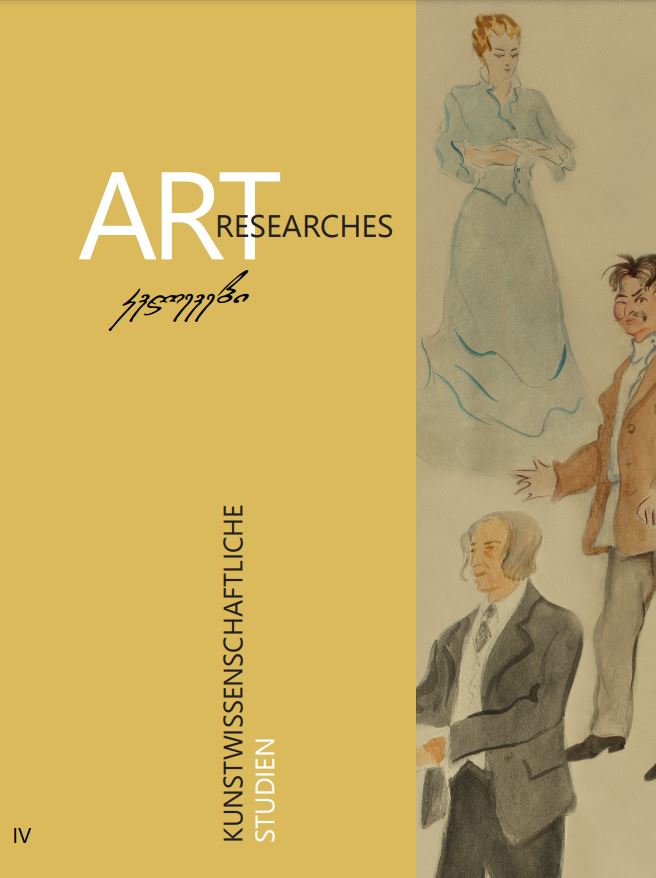The Specificity Of Emotional Design Representation, Its Humanitarian Aspect (Historical Experience Of Teaching In The Subject Of Fine Arts In Different Epochs)
Main Article Content
Abstract
The content of education is an irreplaceable, necessary component of the subject of fine arts. The teaching of the arts in the artistic-historical retrospective, the reporting of its historical knowledge enriches the vividness of the vast past. It is known from written historical sources that the teaching of fine arts is connected with schools, with epochs of civilisations, but in our perception, it appears as a quite possible possibility that the methodology of art teaching has its beginning already with the emergence of consciousness in man. The basis of fine arts is the teaching of painting/drawing. Painting/drawing is one of the oldest forms of human activity, of human existence. Its active form is connected with the epoch of the Palaeolithic i.e., the Old Stone Age. Scientists consider the ancient painting symbolically as a kind of connection with the magical rites of prehistoric man. One thing is certain, man as a “special and chosen” being possesses the ability to capture the movement of figures, to configure the colourful local spots through supple outlines, and to spread them out on the surface as expressive forms. The prehistoric man is the first whose creation and experience finds an addressee.
A rich and varied material for the practice and teaching of painting as well as for theoretical analysis is provided by the wonderful works of ancient Egyptian art: Wall paintings or drawings on papyrus, statues, buildings. The intensive city building, the erection of palaces, temples and structures required the training of journeymen who became masters. In the ancient kingdom of Egypt, schools of art were formed where the perfection of the masters followed a clearly prescribed procedure and system. The painter had to follow strict instructions when depicting the human body. The human figure was depicted either standing, sitting in an armchair or
kneeling in front of the altar. The master followed all these instructions regardless of whether he was drawing a deity, a pharaoh or the Lothos flower. On the one hand, the process of painting and creating figures was easier for a beginner painter (since he drew according to a certain scheme), but on the other hand, the strict regulations that prevailed in Egyptian art limited the painter in the expression of his creative power. The painter did not have to depict the objects as he saw them in reality in
the fullness of their colourful, lively variety, but as it was predetermined by the Egyptian manner and the rules of figure posing. The learning of painting ended with the memorisation of the already acquired laws of representation technique.
Painting was already an educational subject among the Egyptians. Painting was taught together with drawing and special attention was paid to this subject. Hieroglyphic writing was apparently characteristically painterly and brought about the knowledge and skill of depicting diverse objects. The training and methods of painting teachers were to have a uniform systemic character. The Egyptians, who depended on strict rules, were the authors of theoretical foundations of painting. They were the first to elaborate the doctrinal law of the correct arrangement and depiction of figures. Such a thorough mastery of the laws of figure depiction inspired
the ancient Greeks, who often visited Egypt to exchange experiences with and from Egyptians. The painters of ancient Greece possessed a fine, virtuoso technique of painting, the principles of depicting the human figure. This is evidenced by the
masterful painting of ceramics and statues that have survived as Roman copies. In the ancient Greek visual arts, artists (as well as the tradition of the rules of depiction of human figures – meaning the observance of the rules of proportions) masterfully
solved in their works the “correct” method of teaching painting – painting from natural models. The Greeks strove to achieve the real image of the object to be depicted, and in doing so they achieved the illusory. This indicates the existence of highly professional art schools. In the 4th century BC, schools existed in Ancient Greece in Thebes, Ephesus and Sikyon – where different teaching methods were used. The artists of the Greek visual arts, rich in diverse artistic styles, despite appropriating and disseminating the experiences of Egyptian art, broke the “strict taboos of the Orient and set out on the path of great discoveries”.
The history of art teaching in art schools is characterised by different methods. For us, the ancient period is particularly important because it formed the basis for the development of art, for the realistic and materialistic perception of reality in science. The creations of ancient art were and are art objects that were the source of inspiration for the artists of the Renaissance epoch. Thus, the role of ancient art in the formation of the academic teaching system of painting is of enormous importance.
